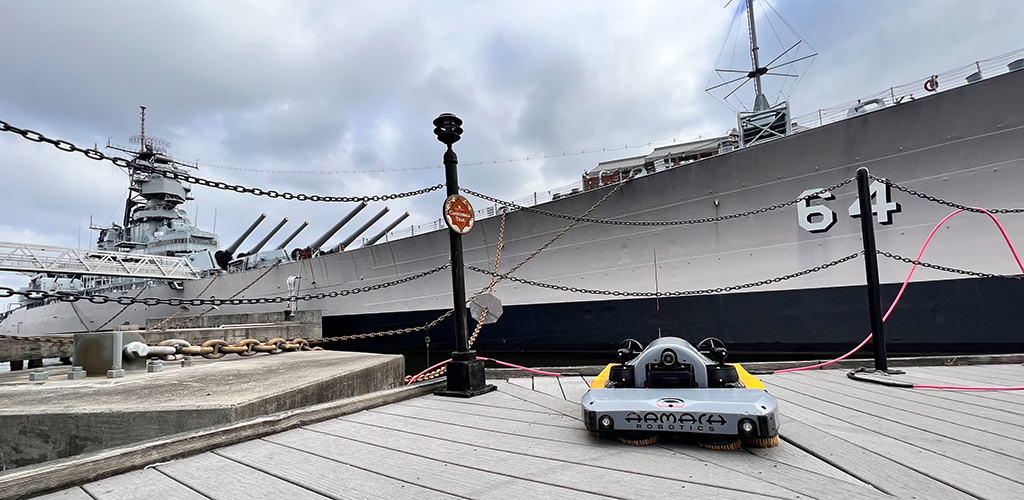Armach Robotics Goes Micro with Biofouling Control

By Karl Lander
The Breakbulk Americas Advisory Board recently announced the event’s first call for papers from the industry. Among the entries, the advisory board selected a paper submitted by Armach Robotics’ Karl Lander, director, regulatory compliance for outreach. Lander supplied Breakbulk magazine with an executive summary of the report, which is published here.
 Biofouling is a problem, and the earlier it's dealt with, the better.
Biofouling is a problem, and the earlier it's dealt with, the better.
The predominant approaches to biofouling control in use today are targeted towards macrofouling (mature grasses, tubeworms barnacles) either through biocidal control, foul release coatings, or through mechanical removal methods.
Armach Robotics Inc. is delivering a solution to address biofouling at its earliest stages, microfouling, when it is nothing more than slime on the hull. Armach’s use of small autonomous robots enables a solution that is efficient, economical and gentle enough on the coating system to be used frequently, ensuring the fouling never reaches the macrofouling stage.
By proactively cleaning the hull at the microfouling stage, fuel costs and greenhouse gas, or GHG, emissions can be reduced, risk of transport of invasive species is minimized, and aggressive cleaning techniques that can potentially damage the coating are avoided.
A recent International Maritime Organization report concluded that a light slime layer on the hull can result in as much as a 15 percent to 20 percent increase in emissions due to increased drag on the hull. Minimizing this slime-induced drag will aid shipping companies in reaching the IMO’s GHG emissions reduction goals, while simultaneously reducing fuel costs.
There is also international concern over the transport of invasive species via hull fouling. Microfouling is generally of little concern, as it is either pelagic in nature and unable to live in coastal waters, or too immature to recolonize in local environments after removal from the hull. That means a ship leaving port with a clean hull will not present an invasive species threat to the next port.
Armach’s solution uses soft brushes to remove the fouling without damaging the coating system. This helps avoid release of pollutants into the water, and allows the coating system to continue to perform as intended. Further, preventing the appearance of macrofouling eliminates the possibility of the fouling itself, harming the coating.
Overcoming Barriers
The argument to address microfouling is strong, but there have been legitimate barriers that Armach’s solution overcomes, including time to complete an evolution, required support infrastructure and cost. Armach’s Hull Service Robot, or HSR, is a small autonomous system capable of navigating the hull with minimal operator oversight and requiring no industrial infrastructure. This allows a team of one or two operators to deploy multiple HSRs on a hull simultaneously, allowing for cleaning of a vessel in eight to 12 hours without impacting other in-port operations.
Using a combination of an inertial navigation system, doppler velocity logger and feature-based sonar navigation, the HSR can maintain and update its position on the hull with a high degree of accuracy. This accuracy allows the HSR to be programmed to clean specific sections of the hull efficiently, ensuring full coverage with minimal overlap. The HSR collects position referenced, before and after imagery as it cleans, allowing Armach to deliver a post-cleaning report that documents the hull condition with an unprecedented level of detail.
Armach will continue to advance the technology to ensure that proactive in-water cleaning via the HSR becomes the choice of vessel operators worldwide.
Karl Lander is director, regulatory compliance and outreach for Armach Robotics. He can be reached at [email protected].
